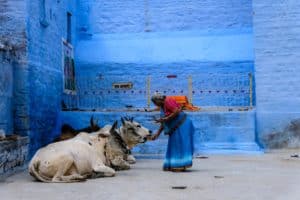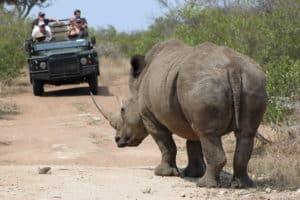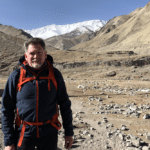India vs Africa, what are the differences in the safari experience. To many, the word ‘safari’, immediately conjures up a vision of Africa, its plains and the array of beautiful landscapes and wildlife. The idea of an Indian safari is less well known. After all, “safari” is a Swahili word derived from the Arabic “safar” which translates as “to journey”. Africa is where most people experience their first safari and as a result, get bitten by the safari bug. Its popularity is indisputable, as many go on to return on a regular basis to experience the glorious African wildlife. But does India compare as a safari destination? The short answer is yes, and you’ll be amazed by the wonder and beauty an Indian safari has to offer.
With this in mind: you need to consider India.
India vs Africa
Rich and diverse in its wildlife offering and abundant in its cultural experiences, an Indian safari should be on every wildlife enthusiast’s bucket list. Sadly, the Indian Safari is often misunderstood, and is less well known than its African equivalent. The two safaris have much in common, but there are some key differences.
In the case of an African safari, you choose a country to visit which satisfies particular safari goals. Take Uganda, for example. Many choose to visit Uganda to see the country’s gorillas, or opt for Kenya and Tanzania to witness the wonders of the great migration. An Indian safari is based in one country with many states that offer diverse wildlife, scenery, and culture. An Indian safari provides the opportunity to marvel at Snow Leopards in Ladahak or visit Madhya Pradesh to see the spectacular Tiger population.
Travel to India is straight forward and is well served globally by a network of carriers. Much like Africa, India houses certain “safari” hubs – all of which have easy access from Dehli and Mumbai airports. Not only do these cities offer great onward connections, they are excellent destinations to visit in their own right.
Local Transport – India vs Africa
Getting around India on safari is where things start getting a little different. In India there are no such things as fly-in safaris. Although India is well served by a variety of local airlines that take you to the safari areas, connecting onwards is usually by car. Private chauffeured vehicles transfer you in comfort and safety to your destination.
Anyone that has had the pleasure of visiting India will know that the experience of being driven around the bustling country is definitely part of the journey and a great source of traveller’s tales.
No trip to India would be complete without a train journey. I wholeheartedly recommend including at least one: it is as great way to travel, meet people and see the countryside. The Indian Rail Network is vast, and chances are a good service will take you near to your destination. There will someone to meet you at your stop and transfer you to your accommodation no matter how remote.
The Landscape
Unlike African countries, India does not have a National Parks Board. The parks are controlled by the states’ forestry commissions with each state setting their own rules for park use. As far as I know, no two states are the same.
Within the parks themselves there are core zones and buffer zone areas offering different access and use. Normally, the lodges are situated in the “Buffer Zone”. The Buffer Zone is an area bordering the park itself, with free movement of game and free access. This refers to a literal buffer between the park and the local community. This is similar to the private concessions that often border African parks, except that unlike Africa the communities can live and work in the buffer.
The “core” is the area of the park where most game activates take place. Both private lodges and licensed operators allowed in these areas. Like Africa, these areas offer the park activities, and often include game drives and walks. Some parks offer overnight fly camps and water-based activities. Aside from day trips, mesmerising night drives are offered by most lodges but only in the buffer zones.
Game Drives – India vs Africa
On an Indian safari, both game drives and walks are operated significantly differently to in Africa. The powerful Land Cruisers and Land Rovers you would see in the likes of Kenya and Uganda are replaced by smaller, zippy jeeps. At first this can be disconcerting if you are used to an African safari vehicle, but the terrain dictates the vehicle choice. Narrow roads thread their way through forests, deep valleys, ridges and open grassland, making the smaller jeep the ideal vehicle.
Depending upon state rules, you may use the lodge vehicle to go into the park with a Lodge Naturalist as the driver, to then pick up a Forest Ranger to act as a Tracker/Guide. In other parks, lodge vehicles are not allowed into the core zone, and this means that you have to use a forestry jeep with their driver and tracker with the lodge naturalists accompanying you. It can prove amusing as there can be more staff than guests on a drive – but this means that you are surrounded by experts to answer any questions you may have about your surroundings.
You will find many similarities in the Indian Walking Safaris as you would in Africa, and these are a great way of getting out an experiencing the parks. Unlike Africa, however, all walks are accompanied by a forest guard – usually armed with a bamboo stick and can of pepper spray for safety. Don’t worry though – although no firearms are ever carried, I must say that I have always felt as safe walking in India as in Africa… I think it’s the pepper spray.
Accommodation
Recently, many of the younger lodge owners in India have spent time in Africa looking at designs of lodges and camps and how a safari experience is run. Don’t be surprised to see elements of an African safari lodge with an Indian twist. Indoor and outdoor showers, sky beds and fly camp options are now available in many lodges.
Indian lodges vary in design and style, and usually reflect the local culture in their architecture. Although not prolific there are tented camps, especially in the desert areas in the north. Unique to an Indian safari is a stay in a heritage property – they range from pre-colonial palaces and hunting lodges to Raj era colonial bungalows. In my opinion, including a stay in a heritage property is a must.
Local Cuisine – India vs Africa
When it comes to cuisine, it’s definitely India that takes the win. Most lodges here also offer a Western option if Indian food is not to your taste. The cuisine is usually based upon the area that you are staying in, using locally sourced produce. A word of warning, though, some states are “dry” which means that no alcohol is served. Lodge owners will turn a blind eye if you have your own duty-free items, but it’s worth checking before you go, so that you don’t get caught out.
Indian Wildlife
The key to any safari is the wildlife, and India is no exception. Just like Africa, India has unique once in a life time species, such as the Snow Leopard and Red Panda. In recent years, Indian safaris have been very tiger-centric, something that has started to change with the focus now on a more holistic safari. By combining different states and parks, it’s possible to see bears elephants, lions and leopards – not to mention the abundance of deer species. India is also a birders paradise, with specialist birding safaris run year-round following seasonal migration. Like on any game drive, birding is always fun and has converted many clients onto avid twitchers over the years.
So, the question is – can India call itself a world class safari destination?
It certainly can.
If you are a looking for a new world of wildlife and a whole new safari experience then give India a go.





